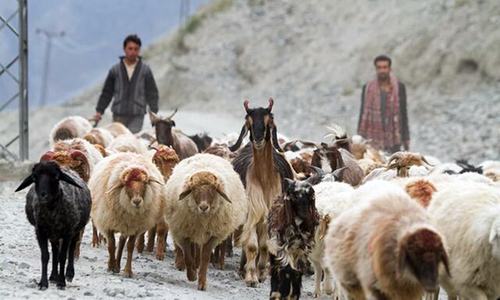ISLAMABAD: Pakistan is on the path of consolidation to tackle sizeable fiscal and current account deficits but the imbalances are expected to diminish slowly, said the World Bank on Friday.
The bank estimates the country’s GDP growth rate to reach 2.7 per cent in 2019-20.
However, the consolidation measures, coupled with other macroeconomic improvements, are likely to lead to an increase in the economic growth to 4pcin the beginning in fiscal year 2020-21, adds the World Bank report titled ‘Global Economic Prospects: Heightened Tensions, Subdued Investment’.
The bank also noted that the improvement in source countries is expected to increase workers’ remittances in the upcoming fiscal year which is likely to boost growth performance and the current account balances.
Inward remittances have seen significant growth in the ongoing fiscal year increasing by 8.43pc to $17.87 billion compared to $16.48bn during the first 10 months of the last fiscal year.
Moreover, Pakistan’s National Economic Council – the high-powered decision making body on economic affairs has also set a target of 4pc GDP growth for the next fiscal year.
Regional growth & risks
The bank also pointed out the stellar growth in the South Asian economies in 2018 averaging at 7pc due to robust domestic demand with the exception of Pakistan, which suffered from a broad-based weakening of domestic demand over the past year against the backdrop of tightening policies aimed at addressing the country’s macroeconomic imbalances.
Regional inflation, on the other hand, remained moderate partly reflecting broadly stable commodity prices.
However, Pakistan has recently experienced a significant rise in inflation driven by currency depreciation, which was followed by several policy rate hikes over the course of ongoing fiscal year.
In its outlook for South Asia, the bank expects robust economic growth in the region forecasting an expansion of 6.9pc in 2019, down from the previous projections of 7.1 owing to downward revisions for Pakistan. However, the regional growth is expected to pick up to 7pc in 2020 and 7.1pc in 2021.
The domestic risks to the outlook for South Asian growth include re-escalation of political turbulence amid elections in Afghanistan and Sri Lanka; fiscal slippages with expanding public spending; and a resurgence of non-bank financial sector funding issues, the bank warns.
Military skirmishes in South Asia especially Pakistan and India in mid-February remained contained, and economic repercussions were minor.
However, a re-escalation of tensions between the two nuclear neighbours could increase uncertainty, depress confidence, and weigh on investment in the region.
Uncertainty about the Brexit process also poses significant risks to some South Asian economies which have preferential trade agreements or generalised system of preferences with the European Union and significant exports to United Kingdom including Bangladesh, India, Pakistan and Sri Lanka.
A no-deal Brexit could have meaningful impact on exports from these countries to the UK in the absence of new trade agreements.
Moreover, South Asia, a net oil-importing region, remains vulnerable to oil price spikes and a sudden jump in prices is likely to worsen current account balances and elevate inflation in the region.
The global oil prices have remained volatile amid rising tensions between the Saudi Arabia and the UAE and Iran.
South Asia is also vulnerable to effects of climate change, such as natural disasters, which tend both to increase inflation and weigh on activity through supply disruptions, especially in the agricultural sector, report says.
The bank says the global economic growth is forecast to ease to a weaker-than-expected 2.6pc in 2019 before inching up to 2.7pc in 2020. Growth in emerging markets and developing economies is expected to stabilise next year as some countries move past periods of financial strain, but economic momentum remains weak.
Emerging and developing economy growth is constrained by sluggish investment, and risks are tilted to the downside which include rising trade barriers, renewed financial stress, and sharper-than-expected slowdowns in several major economies.
Published in Dawn, June 8th, 2019














































